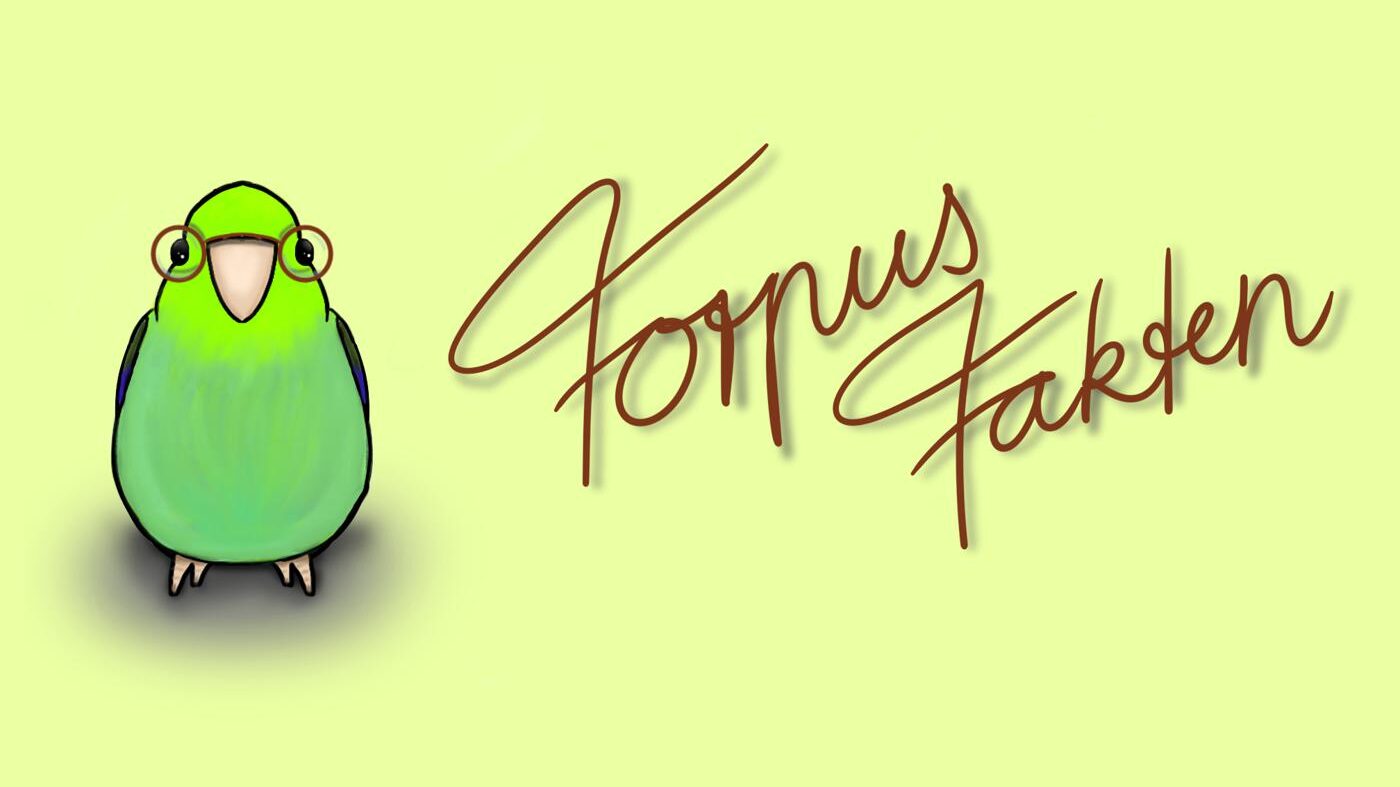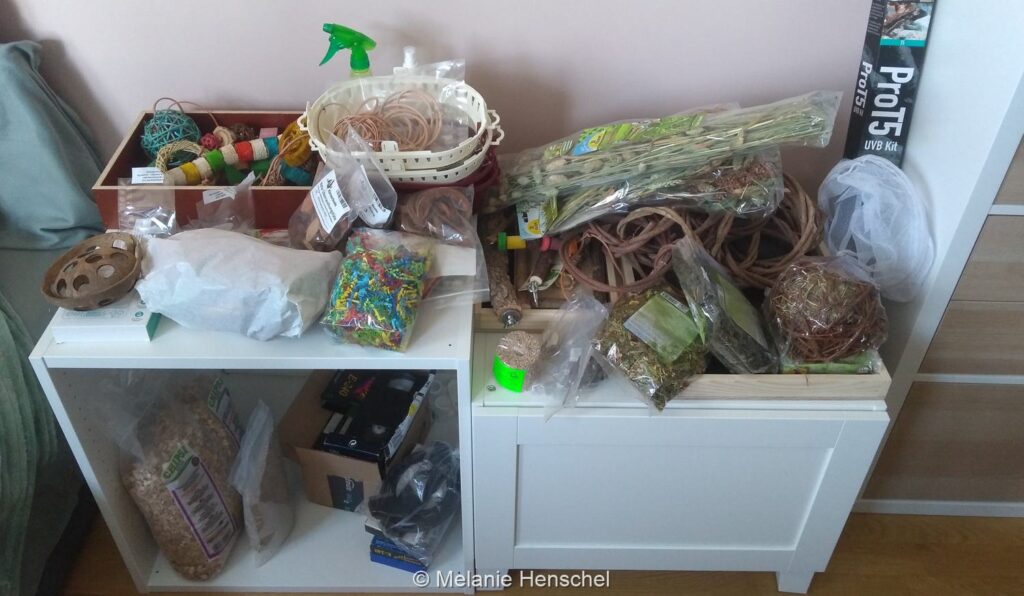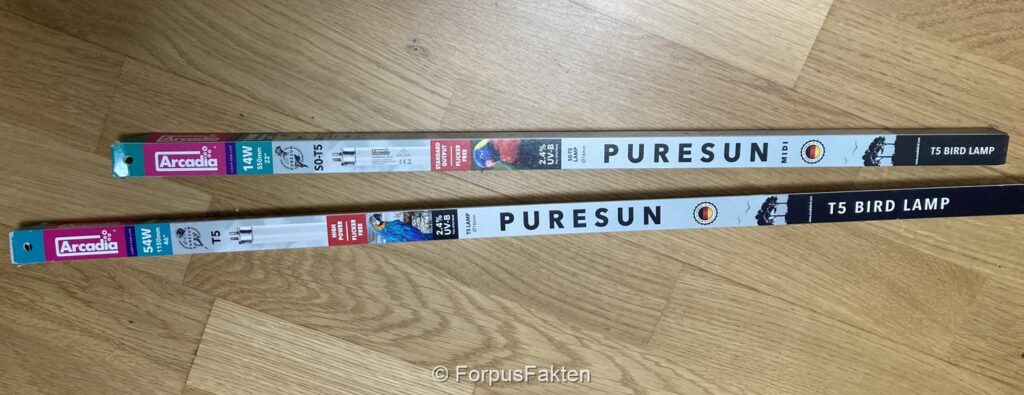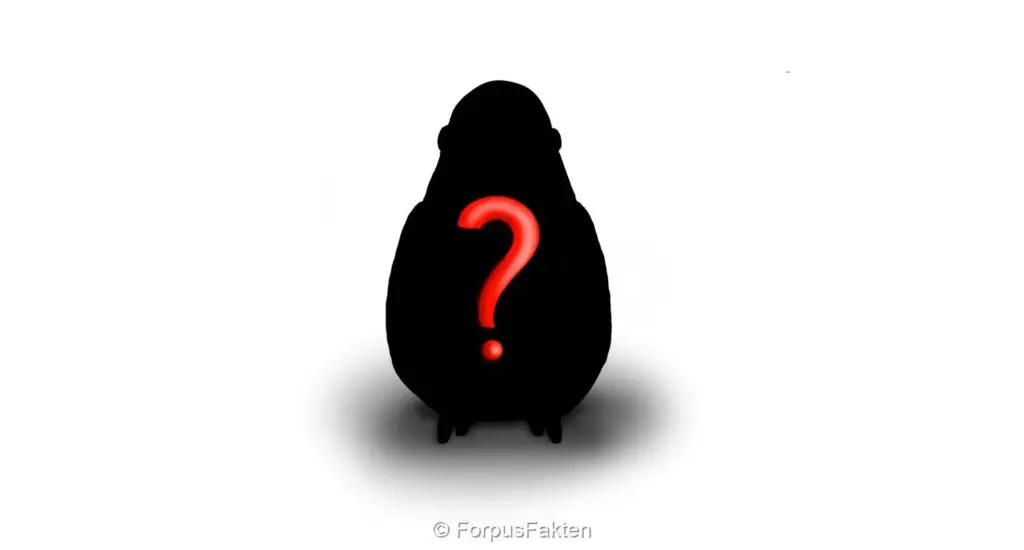Before your birds move in
What are arguments against parrotlets as pets?
So here are a few arguments why parrotlets (or parrots in general) do not make good pets.
All parrots are non-domesticated wild animals
This also applies to lovebirds, budgies and cockatiels, although they are often described as domesticated. All parrots are therefore called exotic pets. Keeping a parrotlet is therefore the same as keeping a titmouse or a sparrow. So they cannot be compared with dogs, cats, rabbits, etc. They have no special adaptations to living with people. Therefore, they also need a habitat replication. For dogs e.g. the natural environment in human-made. For exotic pets a human-made environment bears higher risks for mental and physical illness.
Parrots need lots of attention
On the one hand, parrots are very social animals. Therefore, even if they are kept in pairs, they require social interaction with their keepers to be stimulated enough. In addition, parrots are highly intelligent and in the wild, they spend the majority of their day using this intelligence searching for food. That's why parrots get easily bored living with humans which in turn often leads to abnormal behaviour . We humans are therefore faced with the challenge of consistently thinking of new and varying enrichment for these little brainiacs; a parrot's life long.
Parrots are long-lived
With 10 to 15 years, even parrotlets live long lives considering their small size. Especially getting parrotlets at a very young age, this is a big responsibility for the next 1-2 decades. So before you decide to get parrotlets, ask yourself where you are in 10 years and what your life will look like then.
Parrots are loud
Although parrotlets are among the quieter representatives, parrots are always noisy pets. Almost all other animals kept by humans are comparatively very quiet or silent.
Birds are extremely good at hiding illness
You have to be very attentive and observe your pets a lot to be able to identify illnesses in time. Even shortly before dying, birds may exhibit very little suspicious behaviour. Moreover, as exotic pets, there is much less medical research about parrots which complicates treatment of illnesses and injuries. With parrotlets there is also their small body size which makes it even more difficult and many examinations and treatments are not possible or only with difficulty.
Birds make a lot of mess
Admittedly, this statement is true for most pets. However, this is often underestimated when it comes to birds, as they are actually very clean animals. But there is an equation in bird life. What falls down no longer exists. By living in treetops, parrots typically no longer come into contact with things they drop, whether that's leftover food, old feathers and their dust , or their own excrement . However, forbird keepers, all that is dropped is very real – and needs to be removed daily. If our birds come into contact with their droppings again - unavoidable in any form of husbandry - this poses a high risk to their health. The cage/aviary floor must be cleaned daily, as well as the free flight area if applicable. It is also important to remember that although birds don't have fur, they can still cause allergies .
Parrots aren't cuddly animals
the outdated image of a single-housed budgie eating out of its keeper's mouth or a large parrot sitting on their shoulder portrays parrots as animals that seek loads of closeness and affection from humans. Social media has amplified this effect by showering us with images and videos of extremely tame parrots cuddling with their humans, following them everywhere, bathing in their hands and much more. There is one thing you should definitely know: These parrots are usually kept alone and/or hand-raised. That used to to be common in the past and still is in the US, precisely because parrots become particularly tame this way.
Hand-raised birds become so tame because they imprint on humans during the sensitive phase of their development and then perceive them as als Artgenossen, als ihre Familie wahrnehmen. Dieser Fakt an sich ist schon problematisch und sorgt häufig zu Verhaltensstörungen und Schwierigkeiten bei der Anpassung an echte Artgenossen. Bei Papageien kommt dann noch erschwerend hinzu, dass sie bereits während ihrer Jugend sexuell geprägt werden (Fox 2006). Das bedeutet, dass sie den Menschen nicht nur als Artgenossen ansehen, sondern er in ihren Augen dann auch das Vorbild für passende Sexualpartner ist, vor allem bei isolierter Handaufzucht, komplett ohne Kontakt zu Artgenossen. Diese falsely imprinted Tiere interessieren sich häufig kaum bis gar nicht für Artgenossen und versuchen den Menschen zu füttern, „putzen“ ihn und versuchen sich sogar mit ihm zu paaren. Ist dies der Fall, führt eine Trennung vom „Partnervogel“ Mensch auch zu enormem Stress, genauso wie die fehlende Erwiderung der sexuellen Avancen. Der Vogel wird davon psychisch krank.
In parent-reared single-housed parrots, the processes are similar, but often reversible when they are reintroduced to other birds. The bird becomes tame out of desperation because humans are the only means of social interaction. In the United States, most parrots are hand-raised and and single-housed. So behind the cute pictures there's a deeply disturbed and sad reality. What is important is that, despite all these problems, neither hand-rearing nor single-housing guarantee tameness. Often these birds become extremely aggressive and end up as tragic cases in sanctuaries. That is why unnecessary hand-raising is prohibited by Austrian animal protection law (2. Tierhaltungsverordnung §4 Abs. 5 ). Shockingly, in Germany this is still not mentioned in the law but there are at least legally relevant statements (e.g. TVT 2006).
Contrary to popular belief, parent-reared, pair- or group-housed birds can become tame. However, this requires lots of patience and respect for the animal. But the result usually isn't cuddling in bed, as that is not natural for parrots. If you look at birds that are not mated but are friends, you can see that they sit close to each other, preen each other's heads, share food (without feeding each other), communicate with sounds and go about their daily business together. And that's what you as a bird keeper can expect from a parrot: being allowed to scratch their head, sitting in close proximity (in this case also on your finger, shoulder or knee), letting you feed them by hand, reacting to your words with their own calls and enjoying spending time with you.
That being said, although every parrot canbe tamed, it can vary greatly how easily and quickly that happens. This depends on the bird's as well as the owner's character, the bird's previous experiences, the approach (e.g. clicker training), environmental factors and much more. So you should never assume that your parrot needs to be tamed. Tameness is nice to have.
This list didn't scare you off and you have no problem with the responsibilities? Then the next part is about what you should consider before and during acquiring parrotlets.
What are parrotlets?
As with any pet, it is your duty to inform yourself thoroughly in advance about the chosen species and the requirements for keeping it in human care .Here is an overview. You can find more detailed information about this in the blog, as well as the Encyclopedia.
| Genus | Forpus |
| Species | Pacific parrotlet (Forpus coelestis) - most common Spectacled parrotlet (Forpus conspicillatus) Green-rumped parrotlet (Forpus passerinus) Dusky-billed parrotlet (Forpus modestus) Mexican parrolet (Forpus cyanopygius) Turquoise-winged parrotlet (Forpus spengeli) Riparian parrotlet (Forpus crassirostris) Cobalt-rumped parrolet (Forpus xanthopterygius) Yellow-faced parrotlet (Forpus xanthops) |
| Distribution | Middle and South America |
| Habitat | very humid to dry vegetation |
| Size | 10-15 cm |
| Weight | appr. 30 g |
| Colour | green with blue parts |
| Lifespan | appr. 10-15 years |
| Social behaviour | in pairs or flocks |
| Breeding | cavity-nesting, up to 7 eggs, sexually mature at 6-12 months old |
| Volume | Sparrow-like calls, mostly silent, louder now and then |
| Character | active, curious, relatively aggressive/territorial |
| Aptitude for learning to speak | very low |
| Husbandry | cage/aviary at least 0,5 x 0,5 x 1 m (Germany) or 0,85 x 0,85 x 1,8 m (Austria) + free flight in pairs (non-related, opposite sex), flock starting at 3 pairs |
| Conservation | CITES B |
Detailed information on parrot husbandry can be found at the ARGE Papageienschutz (parrot sanctuary Vienna; especially the Leitfaden Papageienhaltung - guideline for parrot keeping)
Note: In Austria in the federal state of Vienna, all parrotlet species must be registered and since 01.01.2023 you also need to complete a certificate of expertise before acquiring the animals.
Required equipment
Cage/aviary/bird room
Minimum requirement for one pair according to German animal protection law: 0,5 x 0,5 x 1,0 m
Minimum requirement for one pair according to Austrian animal protection law: 0,85 x 0,85 x 1,8 m
But in general, follow the rule: The bigger, the better!
The best and safest cage/aviary material is stainless steel. But the coating of the Montana cages and hot-galvanized (!) aviary wire have also proven reliable. However, there remains a certain residual risk of zinc poisoning.
A good alternative is a designated bird room. A true bird room is completely equipped for the birds, so like an aviary with walls instead of grids. The minimum requirements according to animal protection law apply here as well!
In addition to the room provided by cage, aviary or bird room, every day parrotlets need at least 4 hours of fly around the room. The room which houses the birds has to be big enough to provide enough room for this. The room I have my birds in is appr. 9 m² big and I believe the room to fly should not be a lot less than that. If you have an accordingly large aviary or bird room, free flight is of course already included.
For more information, also have a look around the parrotlet blog and the Vogelschule (bird school).

Pet carrier
For visits at your avian vet, for moving houses or other changes in location you'll need a pet carrier (in box or bag form) to safely and comfortably transportyour parrotlets. Don't pick a too large size for your carrier, so that your birds aren't thrown around if you have to hit the brakes of your car. But it should also be big enough to enable your birds to move around and fully stretch their wings. Additionally, there should be room for bowls, clips or dispensers, so your birds are provided with food and water on the move.
Ich besitze derzeit das Modell „Friends on tour“ von Trixie in zwei Größen, für einen oder zwei Vögel (letzteres siehe Bild). Baugleiche Boxen gibt es auch von anderen Herstellern, z.B. Dehner. Ich bin mit dieser Transportbox jedoch nur eingeschränkt zufrieden. Zum einen haben die Gitter eine Kunststoffummantelung, welche beim Anbringen von Zubehör schnell abkratzt. Das darunterliegende Metall ist dann nicht mehr vogelsicher. Zum anderen sind sie nicht allzu sicher, weil sich das Gitter vom Plastik lösen kann, sollte die Box e.g. should you drop the carrier. Also the door is only closed with a clamping mechanism. This can at least be remedied with stainless steel s-shaped trigger hooks . I protect the carrier from breaking apart by putting it in an additional bag. Unfortunately, I haven't found any better carrier to this day.
Carrier bags, like the one reccomended by the parrotlet blog are an alternative to these classic carriers. I personally find them impractical because bowls and such cannot be fastened es easily. However, in case of dropping the carrier, they are safer.
In case of an emergency, should you not have the right carrier on hand, you can also use a carton box with little holes in it.


Bird lamp
ATTENTION! Ban of fluorescent lights from 08/23! More on that here.
The difference between a bird lamp and a normal lamp is its light spectrum, simply put the colour of the light. First, birds are visual animals and need bright lightingWe know ourselves that we're more active with bright, relatively cold lighting. The best lighting of course, is natural sunlight and that's why good bird lamps imitate sunlight as closely as possible. Since parrotlets come from regions around the equator, they need a light cycle of Äquatornähe vorkommen, benötigen sie einen Lichtzyklus von 12 hours of light and 12 hours of darkness.
Second, birds see differently than humans. While we see the colours red, blue, green and their mixtures, birds also see in the ultraviolet (UV) light spectrum, more precisely in the UVA portion of the light. That's why bird lamps also emit UVA rays which normal lamps don't. Thus, in order to be able to see their surroundings properly, birds need special lamps.
Third, there is also an important health factor. Just like in humans, birds need sunlight to produce vitamin D, more precisely, the UVB portion of sunlight. So in order to enable production of enough vitamin D bird lamps also emit a small portion of UVB light.

for the basic cage lighting the best lamps currently on the market, which I know to have the right parameters for parrots, are the fluorescent lights by Arcadia. For cages and aviaries in the correct size for one pair of parrotlets your options are:
- the model PureSun Midi
- the ProT5 Kit
- The cost price is much cheaper with the ProT5 Kit but the PureSun Midi is a lot more energy efficient and therefore saves you money in the long run, even if you choose to buy two of these lamps for a larger cage or aviary.
- As additional sun spot the model by Lucky Reptile stood the test of time (Please note that this lamp is not suitable as all-day basic lighting!)
- for the additional lighting of sitting areas and playgrounds outside the cage, you can use compact fluorescent bulbs (e.g. by Arcadia or Bird Systems) or the PureSun Mini by Arcadia a small fluorescent light

By now, there are also LED bird lamps on the market, however, they are missing the UVB part of the light. If you choose these lamps, you will absolutely need a sun spot with a metal halide lamp (more on that in the article about the ban of fluorescent lights).
Air filter and humidifier
Birds have a very special respiratory system. With its many branches which even fill their hollow bones, it is perfectly adapted to a life on the wing. But this is also the reason why it is very sensitive in human homes. Therefore, our house birds need outstanding air qualityThat is why for the feather dust alone there should always be an air filter in the room the birds live in.
The second factor concerning air quality is humidity. Especially since most parrots come from tropical regions with very high humidity, the air in the room must never be too dry. On the other hand, it should not be too high either since that promotes mould, which would be just as bad for the bird as for you. Thus, a good compromise is a humidity of appr. 60%, not lower than 50% but not higher than 70% (should the birds live in a tiled room, the humidity can exceed 70%, in normal rooms this would promote mould). An appropriate humidity is also important for a healthy skin and plumage . A common cause for sudden feather plucking in parrots is low humidity. When buying a humidifier you should pay special attention to hygiene, certain mechanisms propagate the growth and spread of bacteria and mould spores.
My personal recommendation is this 2-in1 device by Philips. Due to its special technology it creates an extremely fine vapour which according to the manufacturer has too small droplets to contain bacteria or fungi. Having both air filter and humidifier in one device is an additional bonus. A cheaper alternative using the same technology are, for example, separate humidifier and air filter by Philips (tipp on the side: humidifiers are cheaper in the summer).
Cage equipment
The basics are:
- Perches: natural branches of different diameters, swings, rings etc., maybe platforms
- Toys/shredding material e.g. made from balsa wood, cork, sola, paper/cardboard, coco fibre, willow, bamboo, palm leaves etc.
- Bowls for one pair 2 food bowls + 2 water bowls + at least one set in reserve, maybe food skewers, best made from stainless steel
- maybe a digging box, e.g. filled with wood chips, dried herbs and flowers, cones etc.
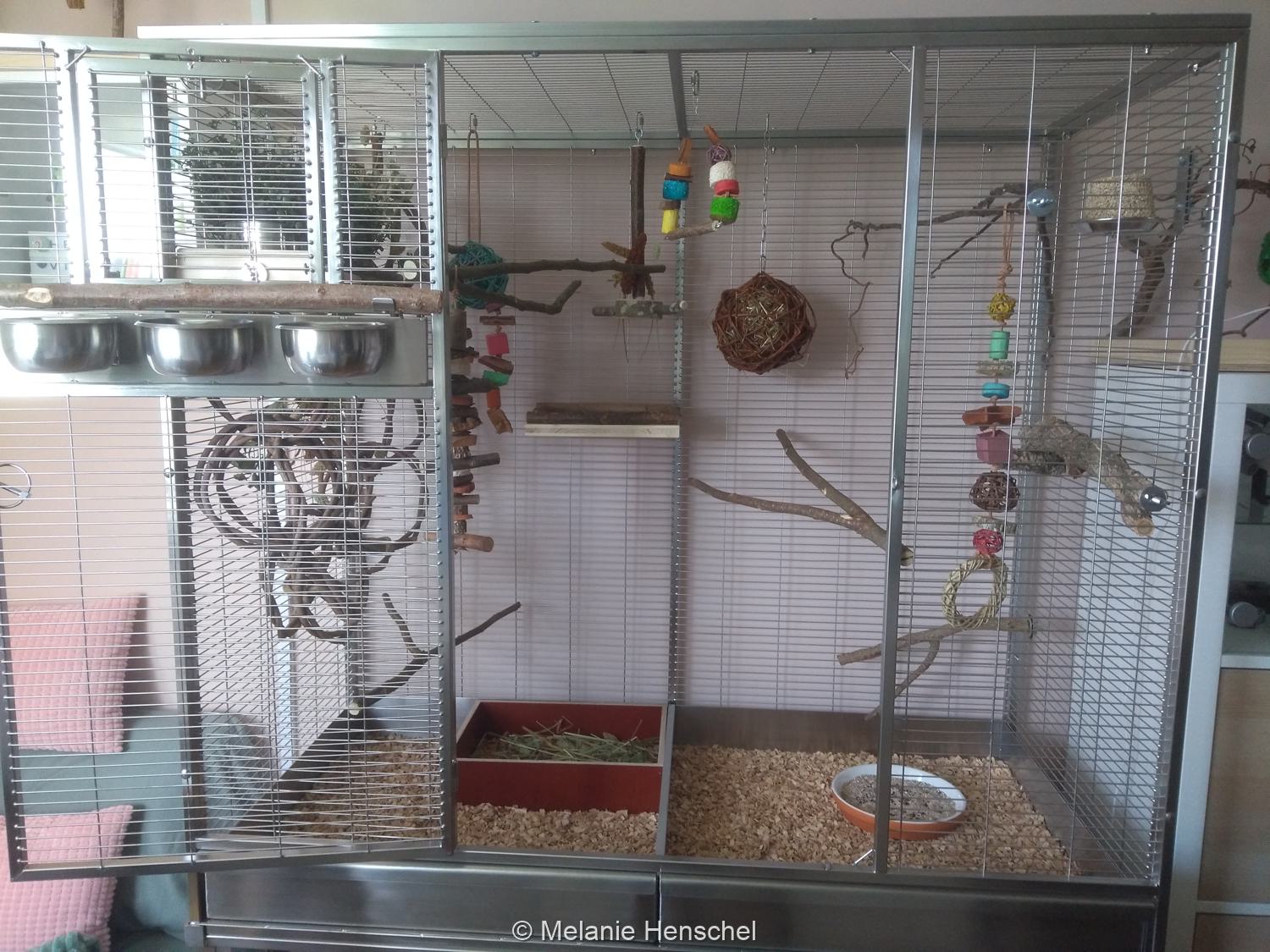
If you don't have a big aviary and your birds shall have a cage plus free flight inside the room, the area outside the cage has to be equipped for your birds as well. It's of little use to have great, ergonomic and natural perches in your cage when your birds spend 70% of the day sitting on the curtain rod.

Unfortunately, most bird equipment sold in pet stores is still of bad quality or even dangerous for birds. But there are a few online shops selling excellent, species-appropriate and safe equipment (and food):
But there is also a lot you can build and craft yourself! I will post crafting ideas in my blog in the future, so stay tuned.
Bedding
The right bedding is hotly debated. Animal welfare law dictates a natural bedding like sand or wood chips. However, this poses some problems regarding hygiene.
Here is an overview of possible beddings:
- No bedding, i.e. the naked metal or concrete surface of the cage/aviary is kept
- pros: no breeding ground for bacteria, droppings clearly visible
- cons: no natural bedding for the animals, dry droppings are possibly hard to clean (but with large aviaries easy to hose down)
- Old newspaper/paper towels
- pros: almost no breeding ground for bacteria, easy to clean (even daily), droppings clearly visible
- cons: no natural bedding
- Wood chips, hemp bedding or the like
- pros: natural bedding
- cons: good breeding ground for bacteria, especially when wet, cleaning time-consuming, droppings hardly visible, promotes foraging in dirty substrate
- Sand
- pros: no breeding ground for bacteria, droppings visible, natural bedding, daily spot-clean possible
- cons: when birds fly up the sand is spilled everywhere around the cage, deep-cleaning is time-consuming, high weight when disposed
But the argument of naturality is very important from the animals' viewpoint and must not be neglected in favour of hygiene! That's why I recommend combining a hygienic bedding (like paper towels or newspapers) with digging boxes or saucers ,filled with wood chips, sand, herbs and much more. These can be placed where the birds don't poop. This way your birdies can safely and hygienically dig to their hearts' content.
That being said, wild parrotlets don't spend a lot of time foraging on the ground. Therefore, pet parrotlets don't need as much opportunity to forage on the ground as some other species, e.g. red-fronted parakeets. Fully arboreal species like many larger parrots can be kept with newspaper bedding or naked concrete without problems. So like always, you have to look at the natural behaviour of your birds.
Scale
To keep an eye on your bird neither being too chubby nor too skinny you should weigh them appr. once per week. Wild parrotlets rarely weigh more than 30g but their offspring in the pet trade are usually a little bigger than their wild cousins. In addition, some species, like pacific parrotlets, are heavier than others, like green-rumped parrotlets. On average, healthy parrotlets weigh between 24 and 35g. Your avian vet tells you what's your birds healthy weight during your first visit. They will feel your bird's sternum by which they can tell your bird's nutritional condition independent of its weight.
You'll find a great recommendation for a scale in this article in the parrotlet blog.I myself have been using this scale for my birds from the start and I'm very satisfied with it.

Cleaner/disinfectant
For your basic weekly cleaning it's enough to use warm water. Many bird keepers, including myself, add a little vinegar , vinegar essence or vinegar-based cleaner. Apparently you can't expect any noteworthy antibacterial effect with this concentration. But in my opinion, it helps removing dirt and poop and also helps against scale build-up, e.g. on the cage grid around bathing spots. For persistent dirt it's good to also have a cage cleaner , e.g. the one by Bactazol, which is available in basically every pet store as well as online.
For cleaning and disinfecting new equipment, when your birds have been sick or for persistent dirt you should also have a bird-safe disinfectant . The best one is F10, which is also used by veterinarians but the disinfectant by Bactazol (not to be confused with the cage cleaner!) also does what it's supposed to and is readily available as well.
Sand/grit/minerals
First, parrotlets need tiny stones for their gizzardSince birds don't have teeth, these stones are used to grind and blend food. The best way to provide this for your birds is in the form of loose grit (with or without added seashells) or grit blocks.
In addition, they need minerals, which are not sufficiently ingested through their diet. Therefore, there are plenty of different mineral blocks, clay blocks, ground-up seashells, cuttlebone or mineral powders available.
Minerals and grit always need to be available ad-libitum .
Especially in the beginning, I recommend offering many different forms of grit and minerals since not every bird accepts every form. This partially stems from the bird's upbringing. For instance, my two birds almost exclusively use loose grit, seashells und bird sand. The variety of mineral and grit blocks available in the cage are, unfortunately, mostly ignored.
Feed
In their natural habitat parrotlets feed on berries, fruits, grass and other seeds. Accordingly, in captivity they need both a basic feed, adjusted to their needs, as well as fresh foods in the form of vegetables, fruits and leafy greens.
The current recommendation by scientists and veterinarians for a balanced diet for parrots in captivity comprises 80% pellets and 20% fruits and vegetables. This recommendation applies to adult birds that are not breeding or rearing young. Dry seeds should only be fed as treats, if at all, and must only make up a very small proportion of the total amount of feed.
The required fruits and veggies are of course available in your local super market, ideally in organic quality.

Suitable extras and treats (of course in moderation!) are e.g. millet (on the cob or panicle), sorghum, Sudan grass, Schelli (a sorghum x Sudan grass hybrid), Lafeber Nutriberries, safflower seed heads and other seeds still on the plant.
Additionally, fresh branches, flowers, berries and grasses from outside are amazing enrichment. I can highly recommend this book by Andreas Wilbrand .
More on the topic of diet for parrotlets here, as well as in the upcoming food plant encyclopedia.

Veterinary care
Already before you get your birds you will have to research an avian veterinarian . Because bird bodies are so different from mammal bodies, avian vets have an additional training compared to normal vets. The Vogelschule (bird school) explains you how to find the right avian vet for your birds here.
When you have found the right avian vet you should make an appointment for a so-called Eingangs- or Ankaufuntersuchung vereinbaren, sobald du weißt, wann die Tiere bei dir einziehen werden. Mehr dazu im Abschnitt „Der Einzug der Tiere“.
Bird-proofing the surroundings
If your parrotlets don't live in a large aviary, they need at least 4 hours outside the cage, every dayThis means you have to bird-proof at least the room the cage is in. The following things need to be taken care of:
- Gaps between cupboards/bookcases and the wall must be closed
- Gaps between radiators and the wall must be secured or closed, or you can cover the whole radiator by building/buying a casing
- Secure windows, other glass surfaces and mirrors (e.g. using sticky post-its; only during acclimatisation period)
- Cables must be hidden or secured with ducts or other protections
- coarse-meshed curtains have to be removed
- windows need grates or mustn't be opened when your bird is outside the cage
- Electrical sockets must be covered
- Toxic house plants must be removed from the birds' room.
- (non-toxic) house plants must be secured (substrate can be covered with pebbles or wire mesh)
- Lamps (including bird lamps) must be secured or exchanged (risk of burning)
- Doors must be secured or you have to be careful not to leave them ajar or open during free flight (if they fall shut due to a draft, your birds can lose toes)
- lead cords in curtains must be removed (risk of poisoning)
- Vases or other deep containers, in which the birds could fall must be secured or removed
- Pens must not be left lying around (risk of poisoning)
- Unsteady picture frames, clocks etc. must be secured or removed
- holiday lights must be secured or removed
- Candles must be removed or exchanged for LED candles
- Scentsscented candles, air fresheners, incense, acrid cleaners, hairspray, nail polish, bug sprays etc. mustn't be used near birds or thoroughly air out the room before letting the birds (back) in
- Non-stickpans, raclettes, sandwich makers, coffee makers etc. mustn't be used near birds, thoroughly air out the room afterwards or get rid of them
- Fish tanks must be covered or moved to another room
- Sharp items must be secured or removed
- Freshly renovated rooms must be thoroughly aired out for several days before letting the birds (back) in
- Plastic table covers must be thoroughly aired out or removed
- Other pets must be separated from birds
This list is not intended to be exhaustive! Wherever you notice other dangers, rather err on the side of caution. I'm always grateful for tips in the comments. I'm already working on a house-plant database with toxic and safe plants for the encyclopedia!
I also recommend securing at least the windows of the room the birds are in with bird wire or at least fly screen. .Parrotlets can easily gnaw through regular fly screens, so they merely keep your birds from escaping if you leave the cage open by accident when you open the window. If you secure the window with bird wire your darling birds can even safely enjoy fresh air and real sunlight if the temperature is over 15°C. I personally installed a fly screen made of aluminium wire mesh which proofed to be parrotlet-safe so far.
Moving in
Where do I get parrotlets?
Overall, there are four ways to acquire parrotlets:
- Private adoption
- pros: you're giving a bird in need a new home, usually low risk of disease, mostly already accustomed to humans or even tame, lots of info about the animals
- cons: possibly long searches or wait periods, often older animals, possibly problematic prior experience, colour etc. cannot be chosen freely
- Breeders
- pros: with good breeders low risk of disease, usually younger birds that can be easily and freely mated, known origin and bloodline
- cons: usually birds aren't bred according to demand, rather for certain colours and other visual features instead of healthiness, usually not or hardly accustomed to humans or even negatively affected
- Shelters
- pros: you're giving a bird in need a new home
- cons: high risk of disease (especially with shared housing with budgies and cockatiels), possibly long searches or waiting periods, often older birds, possibly negative prior experiences, colour etc. cannot be chosen freely, often unknown origin and bloodline
- Pet stores
- pros: quick and easy
- cons: often over-bred mass "products", usually hardly accustomed to humans or even traumatized, very high risk of disease (esp. with shared housing with budgies and cockatiels), if they've been in the store for long they're usually in bad shape, possibly negative prior experiences, often unknown origin and bloodline, often more expensive than breeders
Legal obligations when purchasing parrotlets
No matter where you get your parrotlets from you always need a proof of origin for every single animal. You should get a respective document anyway when you pick up your new birds or you can create one yourself and have the previous owner sign it then. So ask the seller before you go pick them up if possible.
A proof of origin in conformity with the law must contain the following information:
- Name of species in your language (e.g. pacific parotlet)
- Scientific name of species (e.g. Forpus coelestis)
- Original origin: either legally bred, legally imported or caught in the wild
- Age/date of hatching
- Identification of the animal (usually ring number)
- Name, address and contact data of the selling party
- Name, address and contact data of the buying party
- Place, date and signature of the selling party
When acquiring birds pay attention that they have closed rings . Should that not be the case, you should definitely inquire about that and ask for an alternative form of identification.

Initial examination at your avian vet
As a responsible bird keeper you should definitely do an initial check-up (Eingangs-/Ankaufuntersuchung) at your avian veterinarian. In case your bird is sick or injured through the previous owner's fault this gives you opportunity to give back or exchange the bird. But even if you want to keep the bird either way you'll instantly know if there are any health issues that you'll have to keep an eye on and your vet already gets to know their new patient. You can find more on that topic at the, gibt dir das ggf. die Möglichkeit zu Rückgabe und Umtausch. Aber auch wenn du den Vogel so oder so behalten willst, weißt du sofort, ob es gesundheitliche Probleme gibt, die du im Auge behalten oder behandeln musst und deine Praxis lernt ihre neuen Patienten schon einmal kennen. Mehr zu diesem Thema findest du auch bei der Vogelschule (bird school).
Ideally, you'll drive directly from the previous owner to your vet and only drive home afterwards. This prevents you from having to catch your birds again shortly after they've moved in. This way you save yourself and your animals a lot of stress.
After that you should take your parrotlets for a check-up every 1-2 years , provided they don't show any signs of illness or injury.With your initial vet check you have already done your first yearly check-up, too.
I can recommend Ann Castro’s Gesundheitspass für Papageien (Health passport for parrots) to keep track of everything in one place.
Acclimatisation
The day your new parrotlets move in, you should prepare everything beforehand. This means all topics we discussed in the previous abstracts should be dealt with and the cage should have food and water . In addition, you should know that birds instinctively choose the highest perch available for their sleeping spot , so choose the respective perch accordingly. It should be comfortable to sit on and have the perfect diameter (appr. 1,5cm for parrotlets).
When your birds arrive (after their visit at the avian vet of your choosing of course) you should leave the cage lights out at first to calm the birds. There are two ways to get your birds out of their carrier into the cage . Either you carefully open the carrier and hold it immediately against the open cage door. However, this only works if your birds aren't too petrified. Alternatively, you put the carrier inside the cage/aviary, open it and quickly close the cage door. Pay attention that your new pets don't start their first free flight session right there! After that you should move away from the cage/aviary, maybe even leave the room so that your birds can decide themselves and in peace when to leave the carrier. When they have done so you can carefully remove the carrier.
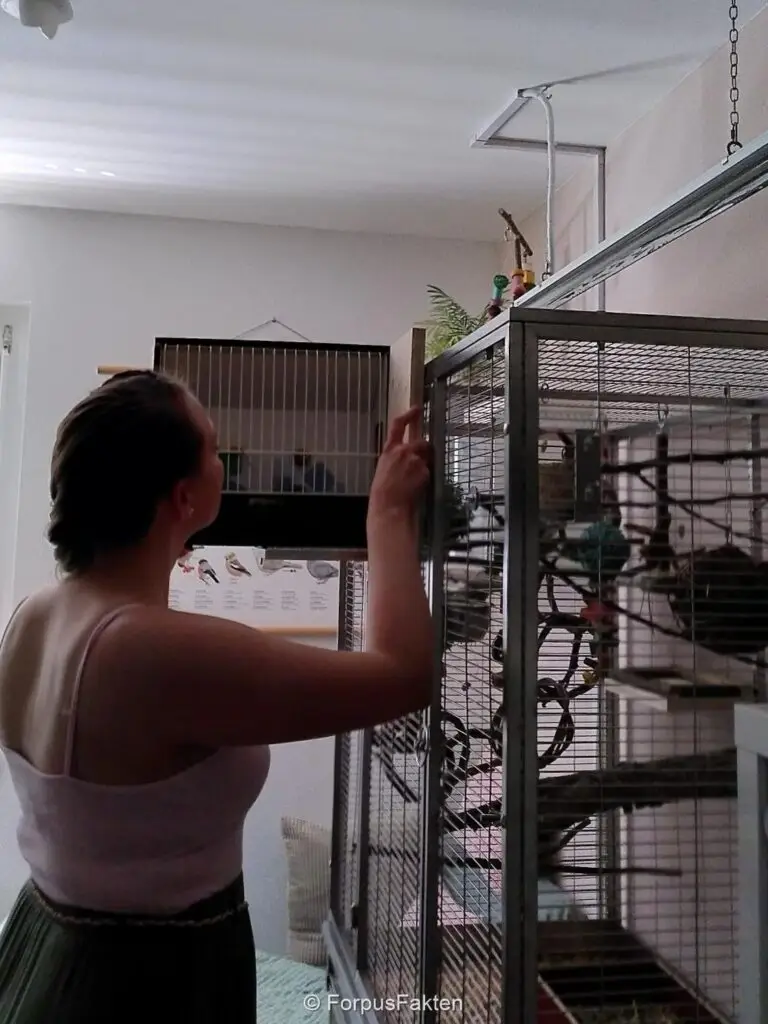
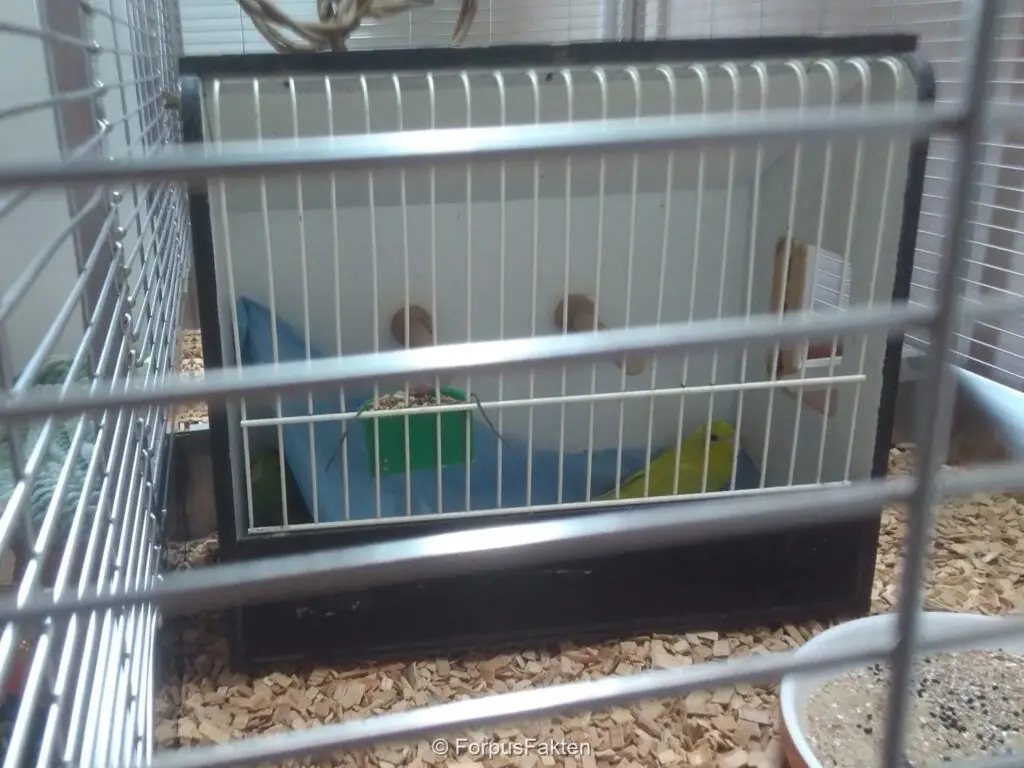
After that you should give your birds some peace and quiet for a while, so they can take a look at their new home. For the rest of the day you can normally move around the room, though you should avoid hectic or loud activities (e.g. vacuuming) for now. It may help to calmly talk to the birds, but you shouldn't stand in front of the cage the whole time, staring at them since they perceive this as threatening.
Once it's time for your birds to go to sleep, slowly and gradually reduce the lighting, to give your birds time to look for a sleeping spot in their new home. As soon as they found it you can turn off the lights and close the blinds if you have them. At least for the first night, you should leave a little nightlight burning. In case the birds wake up at night and can't orient themselves in their new surroundings. The light helps to prevent panicked flying around which could lead to the birds getting hurt (so-called night terrors).
You can learn even more about the acclimatisation period in this article from the parrotlet blog.
fly around the room
Lange habe ich gepredigt, dass die Vögel die ersten 1-2 Wochen im Käfig bleiben sollten, damit sie ihn als ihr neues Zuhause annehmen können und sich aus der Sicherheit des Käfigs schon einmal den Raum anschauen können. Mittlerweile kenne ich viele tolle Halter*innen, die aus gutem Grund dazu plädieren, die Käfigtür bereits am zweiten Tag zu Hause zu öffnen. Beides hat seine Vor- und Nachteile. Der Vorteil der langen Eingewöhnung ist, dass die Vögel sich im Käfig sehr sicher fühlen und es später weniger Probleme damit gibt, die Vögel nach dem Freiflug zurück in den Käfig zu bekommen. Zudem ist der Umzug so vielleicht etwas weniger überweltigend, weil die Raumeroberung Stück für Stück passiert. Der Vorteil der schnelleren Variante ist, dass die Vögel von Anfang an den gesamten Freiflugbereich als ihr Zuhause ansehen. Außerdem können die Vögel so von Beginn an ausgiebig fliegen.
Beide Varianten sind also legitim und du solltest je nachdem, womit du und deine Vögel sich wohlfühlen, entscheiden, wann du fly around the room gewährst. Egal, wann du die Tore öffnest, bis die Vögel tatsächlich den Käfig verlassen, kann es sowieso einige Tage oder Wochen dauern. Das ist ganz normal, bleib also geduldig.
Besonders am Anfang erleichterst du deinen Vögeln den Sprung in den Freiflug, indem du den ersten Landeplatz nah an der Käfigtür platzierst oder eine Brücke oder ein Seil als Übergang platzierst. Später kannst du diese weiter entfernen, damit regst du auch längere Flugstrecken an. Wie bereits im Kapitel zur Einrichtung erwähnt, solltest du den Freiflugbereich genauso mit vogelgerechter Einrichtung ausstatten, wie den Käfig. Je besser du dies machst, desto weniger leiden auch deine Möbel. Achte dabei darauf, dass die Sitzplätze im Außenbereich attraktiv gestaltet sind. Versuche dich dabei so gut wie möglich in die Lage des Vogels hineinzuversetzen, denn „attraktiv“ heißt für uns mitunter etwas ganz anderes als für Vögel. Allgemein werden hohe und helle Plätze bevorzugt. Gerade in der lichtarmen Jahreszeit kann eine möglichst tageslichtähnliche Beleuchtung und/oder UVA-Beleuchtung das Interesse am Freiflugbereich stark erhöhen. Natürlich darf es auch nicht langweilig werden. Dadurch sind Fensterplätze beliebt, sowie Ausstattung mit Spielzeug oder Futter, was vor allem am Anfang vom Käfig aus gut sichtbar sein muss. Hier kann auch das Legen kleiner Lockspuren helfen. Das Anbringen von Sitzplätzen am Fenster reduziert zudem das Risiko von Glaskollisionen.
Costs
Acquisition
Cage: starting at 300€
I recommend to spend a little more here and invest in good materials and maximum size. Alternatively, you can buy a beginner model (e.g. Montana Madeira III), even a used one (you have thoroughly cleaned and disinfected!) and upgrade to a bigger cage after you and the birds got to know each other.
Pet carrier: appr. 10-20€
Lighting: Basic lightning + sun spot appr. 230€ (electronic control gear included)
Air filter and humidifier: appr. 250-350€
Cage equipment: varies a lot depending on how much you build yourself, appr. 100-300€ (I spent around 270€)
Bedding: depends on which material you choose; the paper towels I recommend are, of course, very cheap. The wood chips I use for my digging boxes are around 8€ for a 10l package.
Scale: a small kitchen scale is available starting at 10€, the scale I recommend (without automatic shutoff) is around 30€
Cleaner/disinfectant: one bottle of Bactazol cage cleaner or disinfectant is around 8€ each
Sand/grit/minerals: all in all appr. 10-12€
Feed: one package of (extruded) pellets is around 6-18€ (excl. shipping), depending on the brand. Teats and extras vary greatly, single packs are available for a few bucks. However, I recommend not buying too much in the beginning, 500g of millet are much more than you would expect.
Initial examination at your avian vet: for two birds between 100 and 150€ (maybe more since the reform of standard vet costs in Germany)
The birds themselves: Usually, this is the smallest cost factor. Depending on where you get your birds, you pay between 25€ and 150€ per animal.
Total: overall you can expect a total of around 1000-1800€ for the basic equipment, of course you can always spend more if you want.
Recurring costs
The monthly costs for fresh food, seeds and enrichment material are around 20-40€. In addition, there is the cost for electricity for the lighting which is around 5-10€, depending on the efficiency of your lights and the current price of electricity. Overall, that adds up to a total of around Dazu kommen Stromkosten für die Beleuchtung welche bei ca. 5-10€ liegen, je nach Strompreis und Wattzahl der Grundbeleuchtung. Damit betragen die monatlichen 25-50€ of fixed costs per month.
Costs for electricity and maintenance for your air filter and humidifier vary a lot depending on the devices you use and the size of the room.
If your birds are healthy, they only need a vet check every 1-2 years. This will cost you arounf 100-200€ for one pair. Thus, you should definitely put aside 5-10€ per month for this. However, if there is ever an unplanned vet visit, you should expect a bill of several hundred euros. So you should put aside at least 1000€ for emergencies. 1000€ 🚑
This cost factor is also very important to consider before deciding on flock-housing. If you keep the minimum number of 3 pairs, at least €3000 should be available for emergencies. It is of course very unlikely that several of your animals will become seriously ill at the same time. However, if you are dealing with infectious diseases, the entire flock usually has to be treated to get rid of them.
Required time
Daily:
- appr. 10-15 minutes in the morning and evening to change food and water
- appr. 10 min for daily spot clean (clean/change bedding, remove poop and residue food from equipment and cage bars)
- all of your free time to worship your parrotlets
Weekly:
- appr. 1-2 hours for cleaning the whole cage/aviary and the free flight area, changing enrichment etc.
- appr. 15 minutes to deep clean humidifier and air filter
- appr. ½-1 hours to change the bulbs of your bird lamps
- yearly check-up at the avian vet (time varies depending on time needed to catch the birds, drive to and from the vet, health status of the birds etc.)
You never stop learning!
Never think you know everything there is to know about parrotlets and how to keep them! There are constantly new studies and books published, products developed, experiences made and of course Blog posts written.
So always remain thirsty for knowledge!
For starters, here's a list of recommended further reading:
- Alan B. Bond & Judy Diamond: Thinking like a Parrot – Perspectives from the Wild. The University of Chicago Press, Chicago and London 2019, ISBN 978-0-226-24878-3.
- Ann Castro: Die Vogelschule. Clickertraining für Papageien, Sittiche und andere Vögel. 2021, ISBN 978-3939770787
- Ann Castro: Die Vogelschule. Erste Hilfe für Papageien, Sittiche und andere Vögel. 2021, ISBN 978-3939770022
- Jennifer Ackerman: Die Genies der Lüfte: Die erstaunlichen Talente der Vögel. Rohwolt Buchverlag 2017, ISBN 978-3498000981
- Karl Heinz Spitzer: Sperlingspapageien: Arten und Rassen, Haltung und Zucht. Ulmer, Stuttgart 1992, ISBN 978-3-8334-8551-0. (leider nicht mehr aufgelegt)
- Volker Munkes & Heidrun Schrooten: Papageienverhalten verstehen: Edition Gefiederte Welt. Ulmer, Stuttgart 2008, ISBN 978-3-8001-5446-3.
- Werner Lantermann: Sittiche und Papageien – Verhalten in Freiland und Voliere. Oertel+Spörer, Reutlingen 2012, ISBN 978-3-88627-406-2
Sources
Die Vogelschule (as of 25.04.2023)
Fox, R. (2006). Hand-Rearing: Behavioral Impacts and Implications for Captive Parrot Welfare. In Manual of Parrot Behavior (pp. 83–91). John Wiley & Sons, Ltd. https://doi.org/10.1002/9780470344651.ch10
Jörg Ehlenbröker, Renate Ehlenbröker & Eckhard Lietzow: Agaporniden und Sperlingspapageien: Edition Gefiederte Welt. Ulmer, Stuttgart 2010, ISBN 978-3-8001-5431-9
Tierärztliche Vereinigung für Tierschutz e.V. (TVT) Arbeitskreis 8 „Zoofachhandel u. Heimtierhaltung“ (2006): Stellungnahme zur Handaufzucht bei Papageien. (abgerufen von https://www.tierschutz-tvt.de/alle-merkblaetter-und-stellungnahmen/?no_cache=1&download=TVT-Stellungn._Handaufzucht_bei_Papageien__Jan._2006_.pdf&did=62 am 27.01.2024)
Wolfgang Aeckerlein & Dietmar Steinmetz: Vögel richtig füttern. Ulmer, Stuttgart 2003, ISBN 978-3800135455
